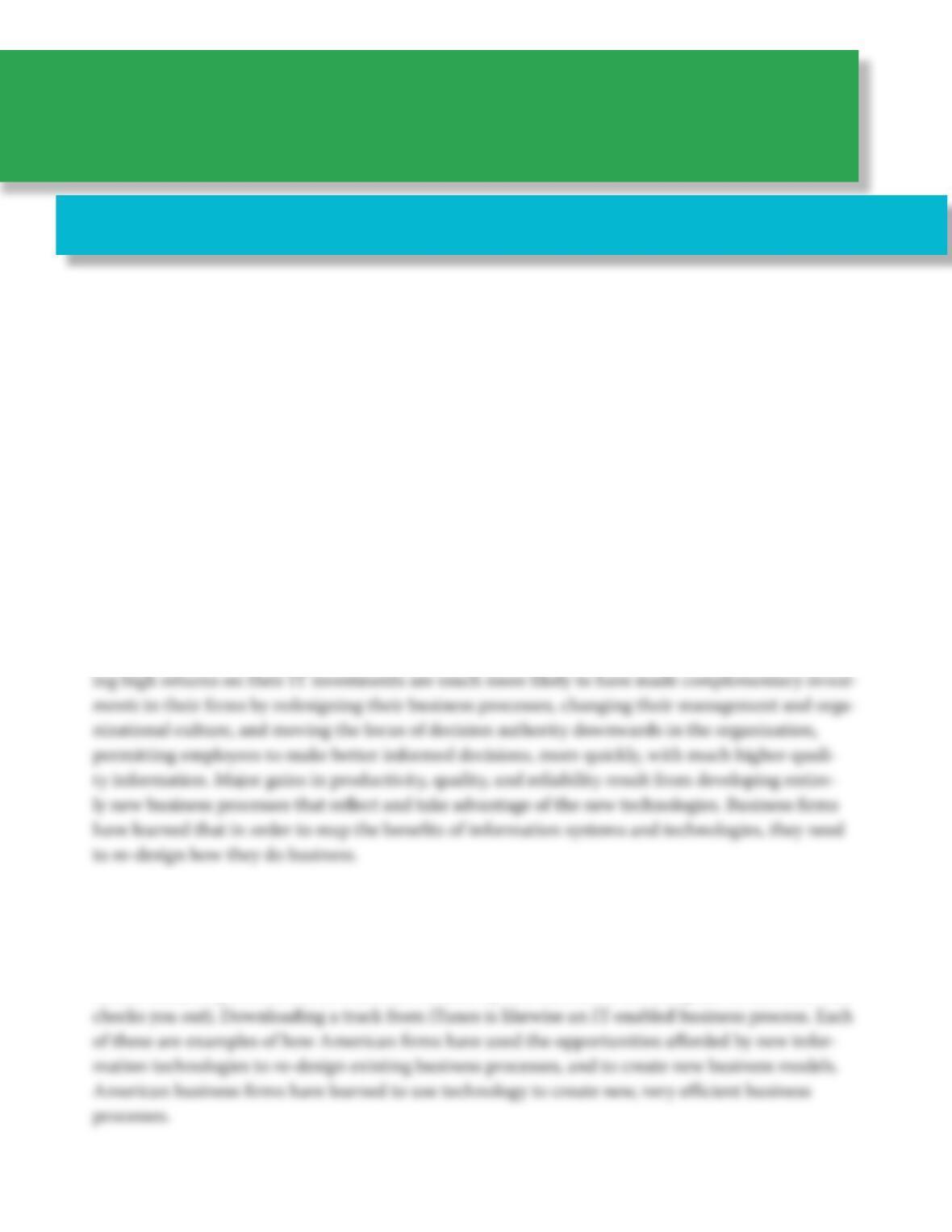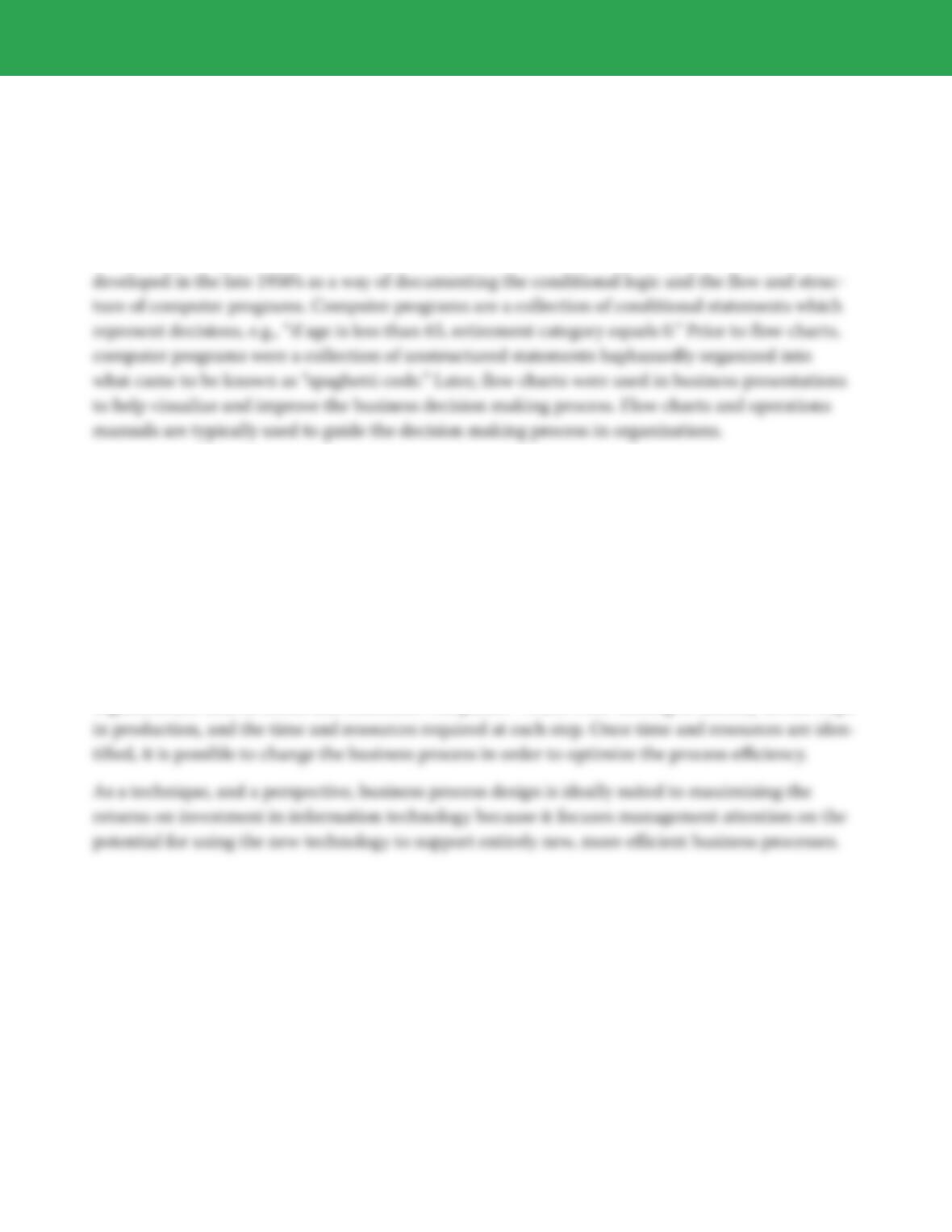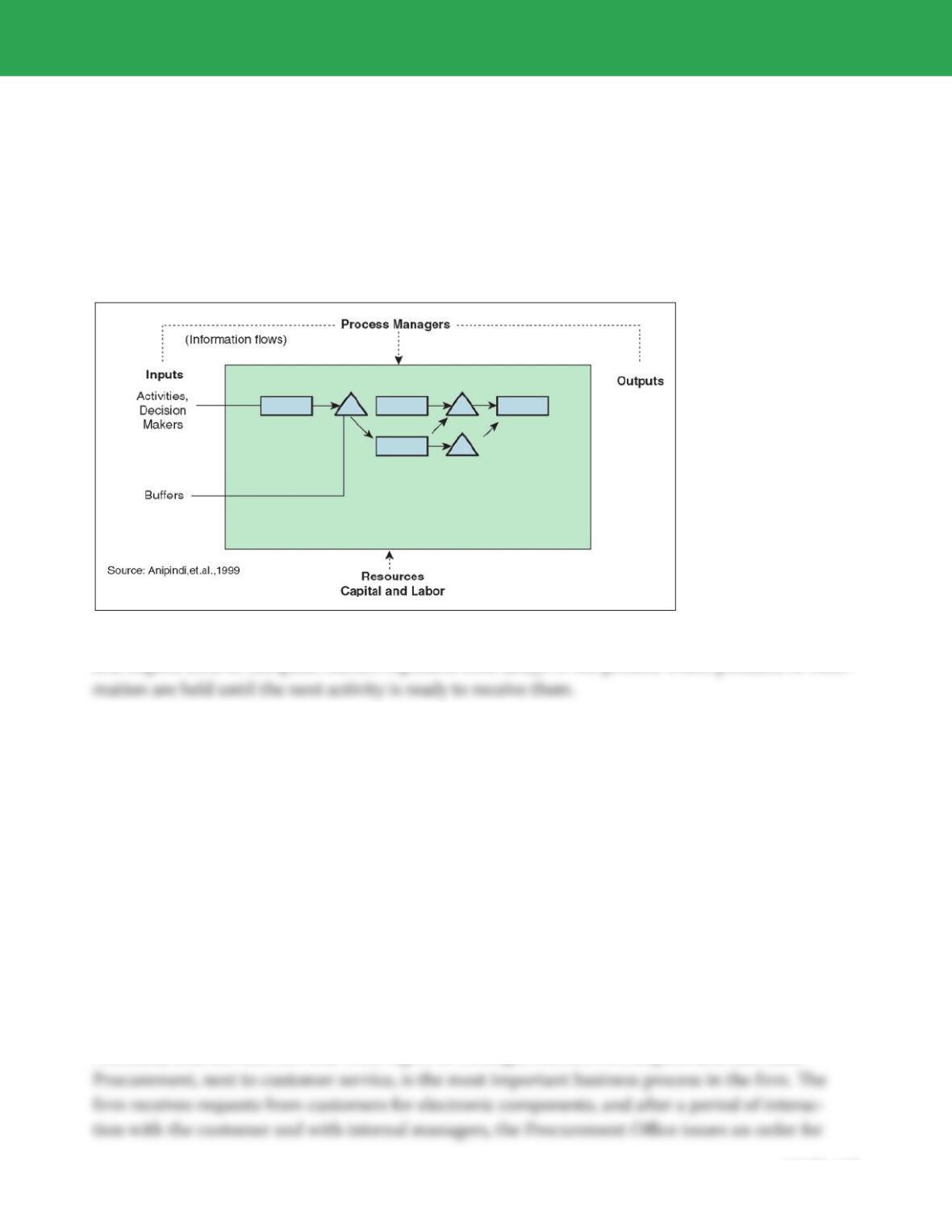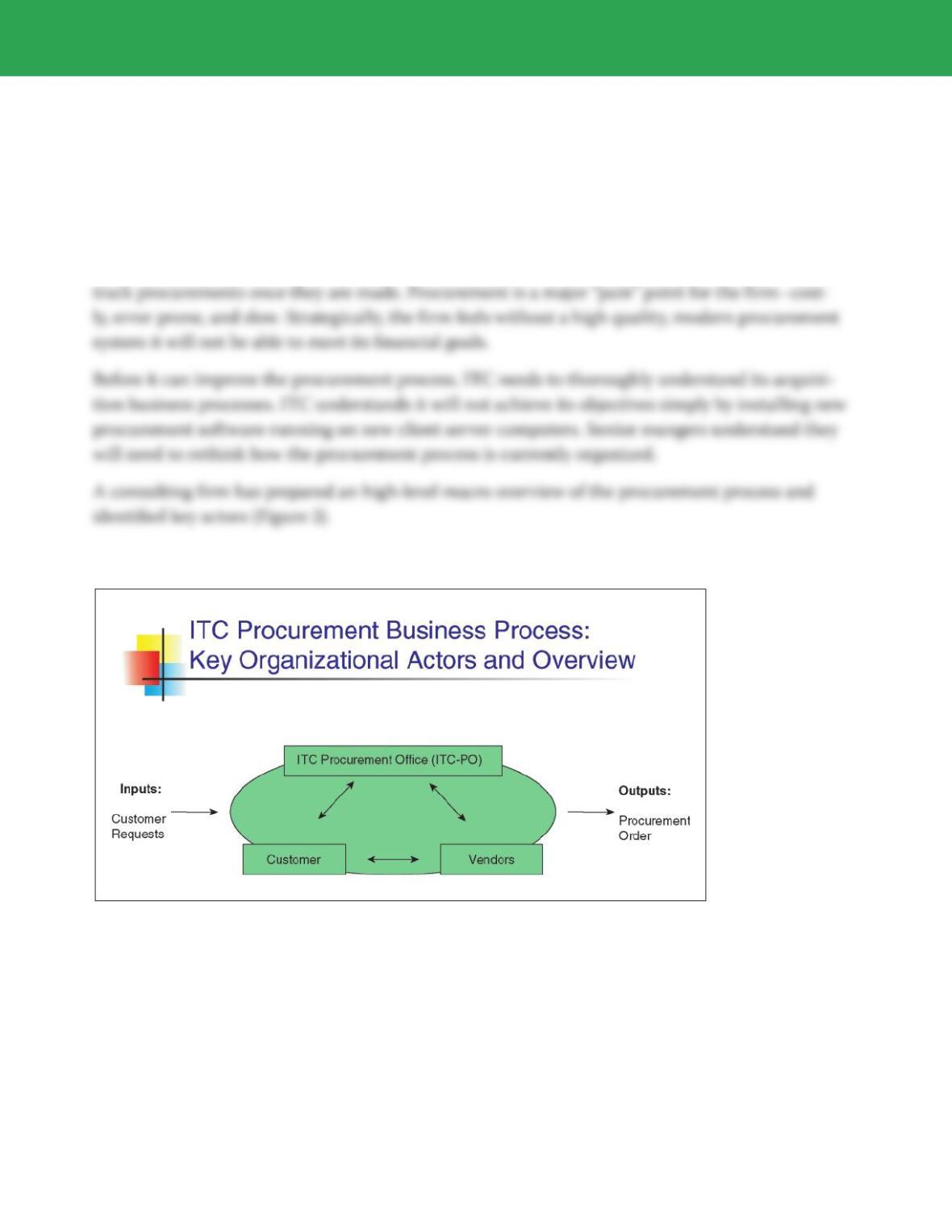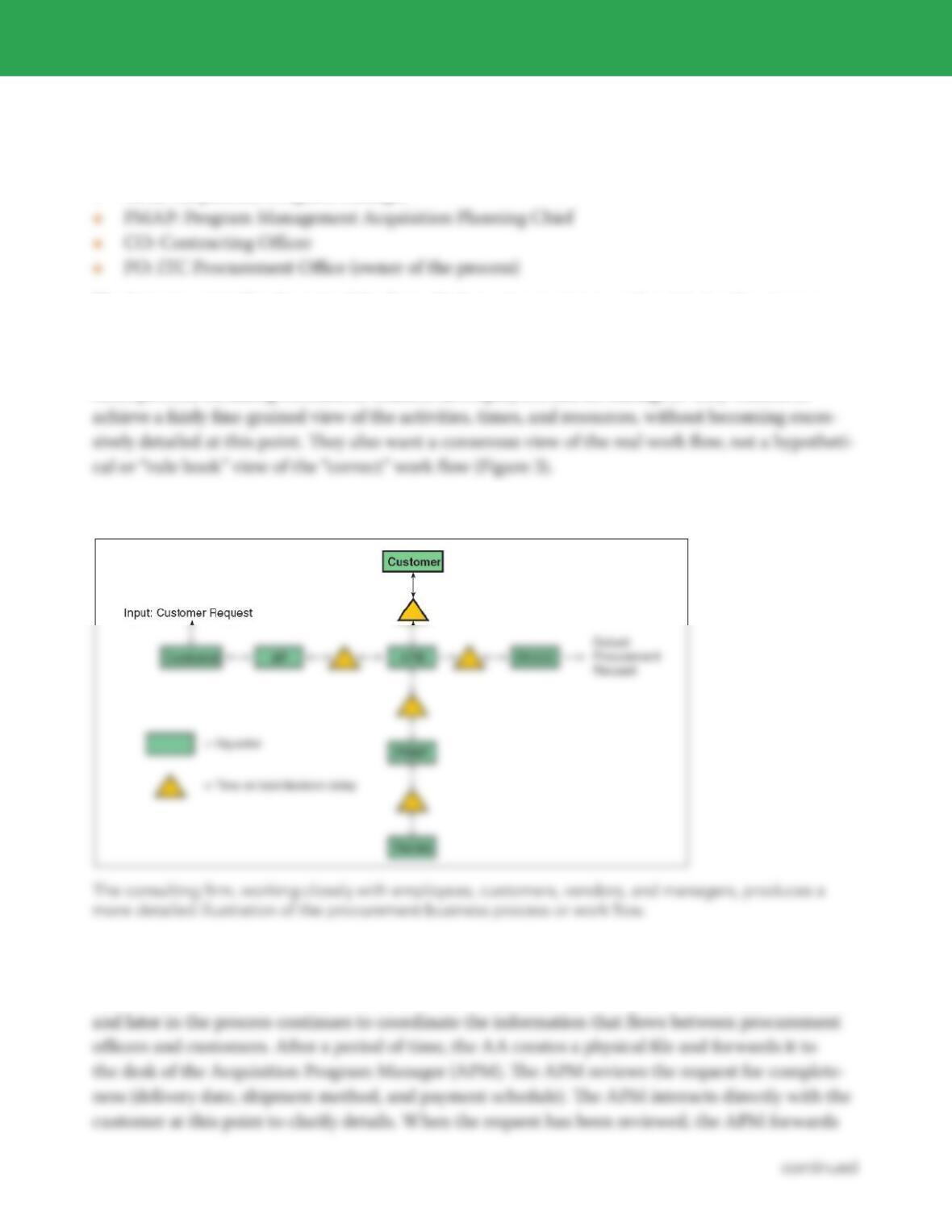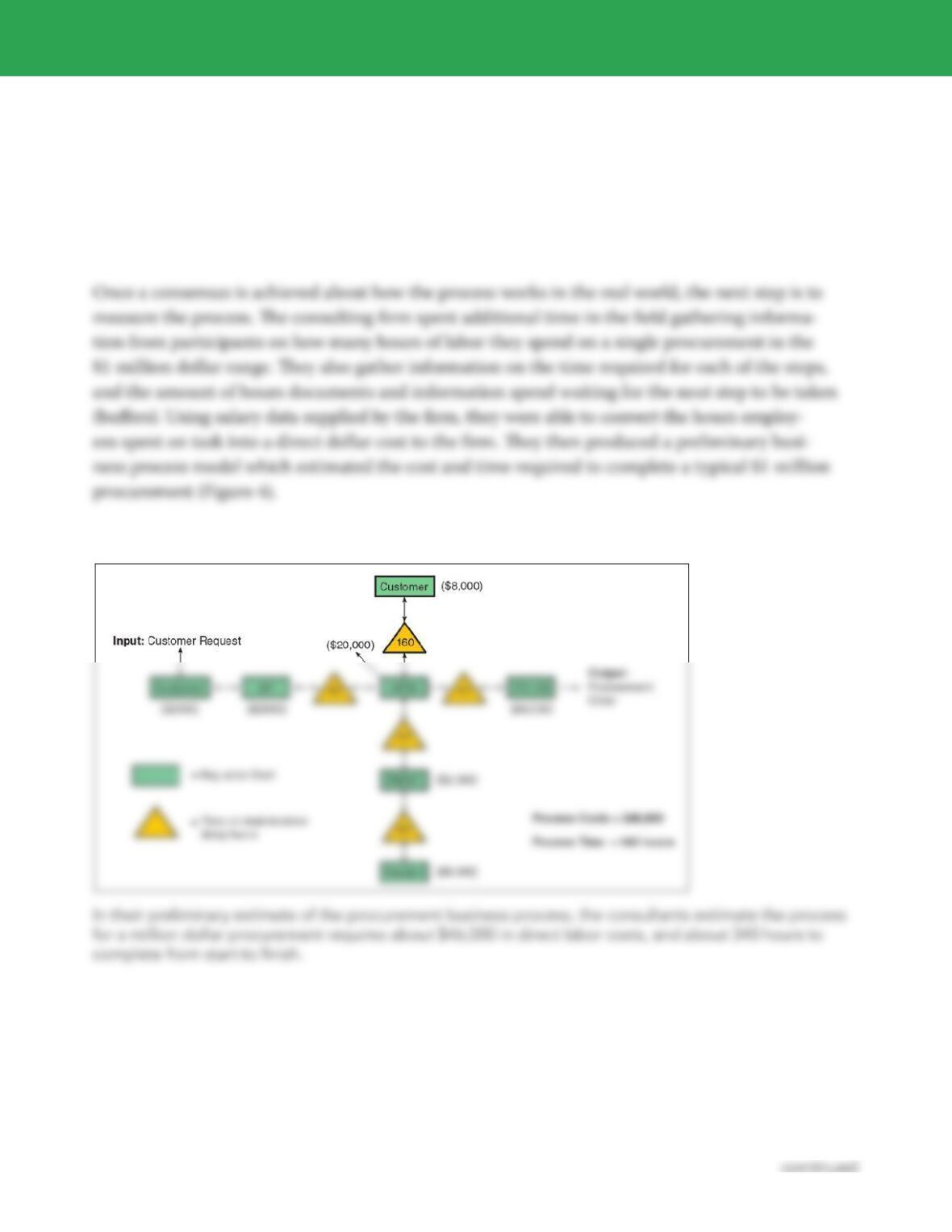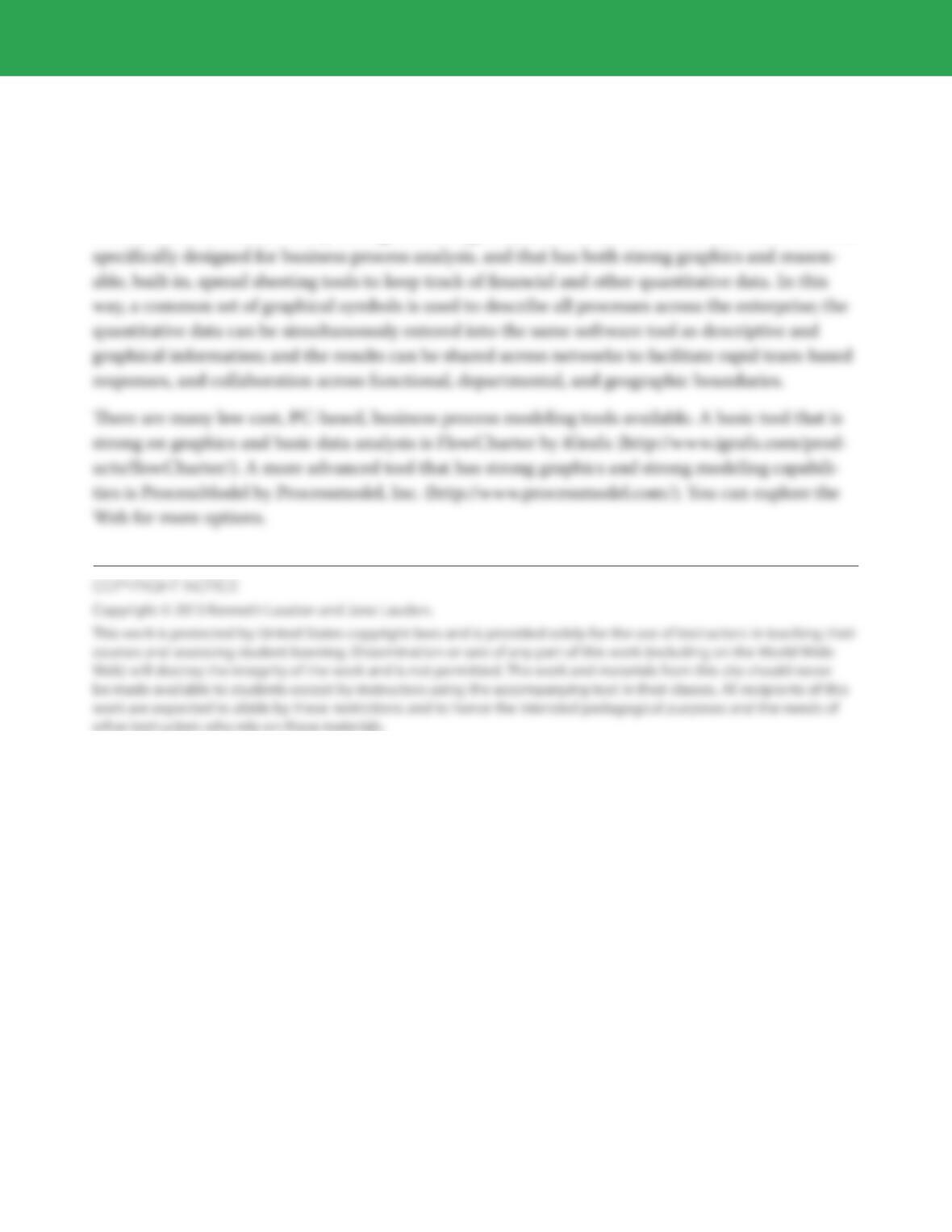Chapter 13 Learning Track 2 2
continued
How to Describe a Business Process
fiere are two predominant methods of documenting business activities: ffow charts and business
process modeling. Each of this has very dierent uses and intentions. Flow charts are a schematic
representation of a decision process--not a business process. A decision process is a set of logical-
ly and temporally related decisions that are required to turn inputs into outputs. Flow charts were
Unfortunately, ffow charts tell us nothing about how long a decision process takes, who is involved,
what kinds of activities are involved, or how much it all costs. To answer these questions, business
process modeling is required.
Business process modeling is very dierent from ffow charting. A business process is a set of logi-
cally and temporally connected activities in a business that turn inputs into outputs, utilize capital
and labor resources, and require time to complete. Business process modeling focuses on the ffow
of work which transforms raw materials into finished products, inputs into outputs. Business
process modeling provides a schematic representation of a production process—not a decision
process. Originally developed in early factories, the technique spread to service and “paper-based”
organizations such as banks and insurance companies--which were seeking to identify all the steps
How to Model a Business Process
Modeling a business process means two things: (a) describe the business process, and (b) measure
the process. Before you can improve a business process, you need to be able to describe it, docu-
ment it, and measure it.
So let’s start with how to describe a business process. fiere is a great variety of commercially avail-
able software tools that are used to graphically describe a business process. For our purposes of
teaching the basics about business process modeling, they are too complicated and too sophisti-
cated. We prefer to start with a generic model of the business process that focuses on the key attri-
butes of any business process (see Figure 1 below):
